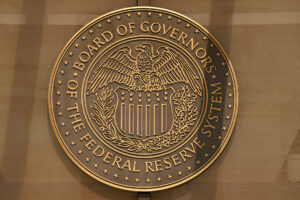RISING INFLATION in the Philippines, which reached 4.4% in July, is likely to reduce consumer spending on leisure travel and could weaken overall demand for air travel, according to analysts.
“Persistent inflation reduces purchasing power, so it can affect demand for leisure air travel,” Enrico P. Villanueva, a senior lecturer at the University of the Philippines Los Baños Economics department, said in a Viber message to BusinessWorld.
He also said that airlines may face pressures to manage expenses and keep fares competitive.
In July, inflation rose to 4.4%, mainly due to higher electricity and food costs, according to the Philippine Statistics Authority. Household spending, which makes up over 70% of the economy, rose by 4.6% year on year in the second quarter, slowing from 5.5% in the same period last year. Despite this, the economy expanded by an annual 6.3% in the April-to-June period.
Mr. Villanueva noted that continued upward adjustments in inflation also affect input costs like fuel surcharges, leading to higher airfare costs.
“I think airline companies will try to hold off airfare increases as long as they can to support demand,” he said. “The industry is still in the recovery phase after the pandemic.”
The Civil Aeronautics Board has raised the fuel surcharge airlines may impose to Level 6 in August, up from Level 5 in July.
At Level 6, the domestic passenger surcharge ranges from P185 to P665, while the international surcharge ranges from P610.37 to P4,538.40.
The International Air Transport Association reported that jet fuel prices remained volatile despite a 2.6% decrease to $93.20 per barrel as of August 9.
John Paolo R. Rivera, senior research fellow at the Philippine Institute for Development Studies, said some consumers may still spend on travel if it is a “priority.”
“It may not necessarily reduce their travel spending due to ‘purchase priorities,’ wherein consumers are willing to reduce spending on items that are not priorities,” he said in a Viber message.
According to the Manila International Airport Authority, passenger volume at the Ninoy Aquino International Airport reached 29.54 million as of the end of July, marking an 11.8% increase from 26.42 million in the same period last year.
“As a pioneer in low-cost air travel, AirAsia Philippines [recognizes] that economic pressures like the recent inflation rate may influence travel behavior and could lead to adjustments in airfare pricing,” Steve F. Dailisan, head of communications and public affairs at AirAsia Philippines, said in a Viber message.
The airline said it will continue implementing its monthly price drop to ensure air travel remains accessible and competitive for passengers.
Budget carrier Cebu Pacific, operated by Cebu Air, Inc. (CEB), said it is addressing cost increases by lowering expenses through high-frequency flights and optimal aircraft utilization.
“While we have seen specific cost increases as we deal with supply chain issues, CEB’s business model focuses on maintaining affordable fares to achieve high load factors and reach more passengers,” Cebu Pacific said in a statement.
“Inflation is a challenge faced by all businesses, and we address this proactively by implementing strategies to control costs,” Cebu Pacific said.
The budget airline added that its transition to Airbus’ new engine option (NEO) aircraft, known for its enhanced fuel efficiency, has allowed the company to lower costs.
BusinessWorld has sought comments from flag carrier Philippine Airlines, but it has yet to reply by the deadline.
Globalinks Securities and Stocks, Inc. Head of Sales Trading Toby Allan C. Arce said both listed airline companies will likely see lower income for the third quarter, mainly driven by rising fuel costs and accelerated inflation.
This may lead to cost-cutting measures such as reducing flight frequencies to maintain profitability.
“Volatile fuel prices remain a critical factor. If fuel costs decrease or stabilize, it could relieve pressure on operational expenses,” Mr. Arce said.
He added that high competition in the region may limit pricing power, making it harder for airlines to pass increased costs to consumers.
“A recovery in travel demand, especially in international markets, could boost revenues. However, plans for fleet expansion or new route introductions could be delayed or scaled down if financial performance does not meet expectations,” Mr. Arce said. — Ashley Erika O. Jose






